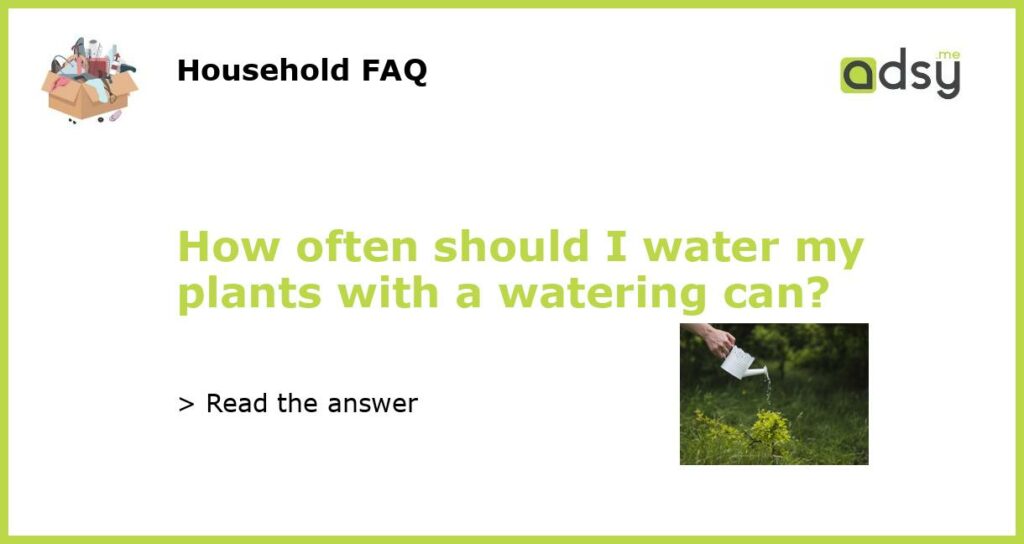How Often Should I Water My Plants with a Watering Can?
Watering your plants with a watering can is a great way to give them the hydration they need. However, it’s important to find the right balance and not overwater or underwater your plants. The frequency of watering depends on various factors such as the type of plant, the weather conditions, and the potting medium. In this article, we will explore how often you should water your plants with a watering can.
Understanding the Watering Needs of Different Plants
Not all plants have the same watering requirements. Some plants prefer drier conditions, while others need more moisture. It is important to research the specific watering needs of each plant in your collection. For example, succulents and cacti prefer infrequent watering, while tropical plants with large leaves may require more regular watering. Understanding the individual needs of your plants will help you determine the frequency of watering with a watering can.
Factors to Consider when Watering with a Watering Can
Several factors should be taken into consideration when determining how often to water your plants:
- Type of soil or potting medium: Well-draining soil mixtures allow water to flow through easily, reducing the risk of overwatering. On the other hand, heavy soils may retain more moisture, requiring less frequent watering.
- The size of the pot: Smaller pots dry out faster than larger pots, so plants in smaller containers may need more frequent watering.
- Weather conditions: Plants typically need more water in hot, dry weather than during cooler seasons.
- Plant growth stage: Younger plants typically require less water compared to mature plants.
Signs to Look for to Determine Watering Frequency
Observing the signs and symptoms in your plants can give you a clue about their watering needs. Overwatering can lead to root rot and other problems, while underwatering can cause wilting and stunted growth. Here are some signs to look out for:
- Soil moisture: Check the top inch of soil with your finger. If it feels dry, it’s time to water. If it feels moist, wait a day or two before watering.
- Wilting leaves: Droopy or yellowing leaves can indicate both overwatering and underwatering. Look for other signs to determine the correct watering frequency.
- Weight of the pot: If the pot feels light when you pick it up, it may be time to water.
General Guidelines for Watering with a Watering Can
While the watering needs of every plant are unique, here are some general guidelines to follow when using a watering can:
- Water thoroughly: When you water, make sure that the water reaches all parts of the root zone. This promotes healthy root growth.
- Avoid standing water: Allow excess water to drain out from the pot. Standing water can suffocate the roots and cause root rot.
- Water in the morning: Watering in the morning allows the excess moisture on leaves to dry out during the day, reducing the risk of fungal diseases.
- Adjust watering frequency: As the weather changes, adjust your watering frequency accordingly. Hot, dry weather may require more frequent watering, while cooler seasons may require less.
By considering the specific watering needs of your plants and observing the signs they show, you can determine how often to water them with a watering can. Remember to tailor your watering schedule to the individual needs of each plant, keeping in mind factors like soil type, pot size, weather conditions, and plant growth stage. With proper care and attention, your plants will thrive and flourish.






